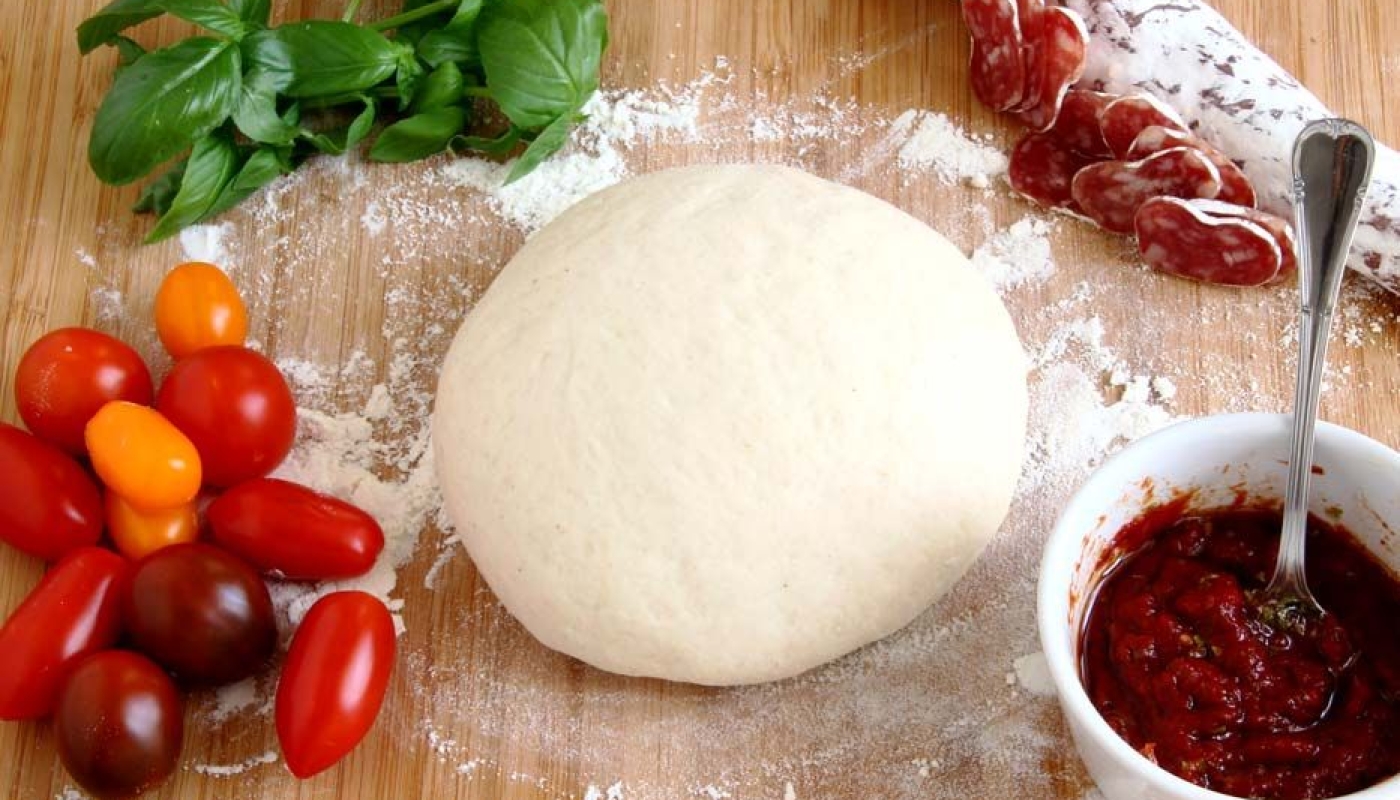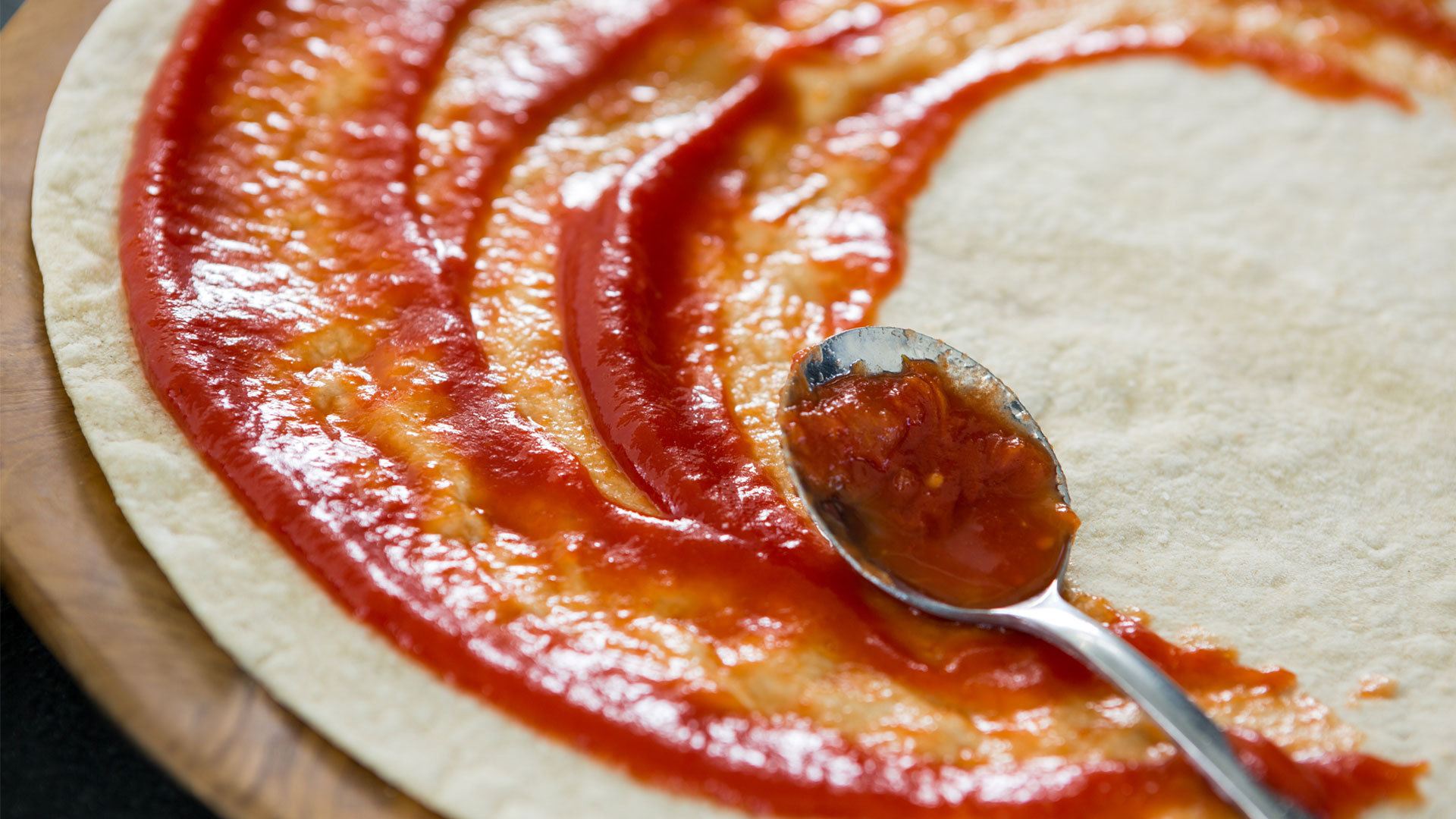How to Make Authentic Italian Pizza Dough for Restaurants

Ingredients:
- Noodle flour or pizza flour: 1 kg (using high-quality flour like noodle flour or pizza flour is recommended)
- Yeast: 3 grams (preferably high-quality dry or fresh yeast)
- Sugar: 5 grams (to help activate the yeast)
- Salt: 25 grams (for balanced flavor)
- Cooking oil or olive oil: 30 grams (extra virgin olive oil adds better taste)
- Water: Variable amount depending on the quality of flour (use lukewarm water for better yeast activation)
Instructions:
-
Mix the dry ingredients: Start by combining the flour, sugar, salt, and yeast in a large bowl or mixer. If using fresh yeast, dissolve it in lukewarm water with sugar, let it foam, then add it to the dry ingredients.
-
Add water: Gradually add water to the dry mixture. Add the water slowly to avoid clumping. This step is crucial for achieving a smooth dough texture. Adding all the water at once might result in a dough with an improper consistency.
-
Initial kneading: After adding the water, knead the mixture by hand or with a mixer until the dough becomes smooth and elastic. At this stage, the goal is to form a soft, cohesive dough that is not sticky.
-
Final kneading: Once the dough reaches the right consistency, knead it thoroughly for 10 to 15 minutes. If using a mixer, knead at medium speed. Proper kneading helps develop the gluten structure, which results in a perfect Italian pizza dough.
-
Add the oil: After the dough is ready, add the oil and knead again. This step is essential because the oil gives the dough the right elasticity and smoothness. Olive oil also adds an authentic flavor to the Italian dough.
-
First resting period: Place the prepared dough in a bowl and cover it with a damp cloth or plastic wrap. Allow it to rest for 20 to 30 minutes at room temperature. The resting environment should not be too warm, as high temperatures can cause the dough to overproof and lose its quality.
-
Dividing the dough: After the initial rest, divide the dough into portions of your desired size. For standard pizzas, portions weighing 200 to 250 grams are recommended. After dividing the dough, let it rest again for 20 minutes to allow it to rise further.
-
Shaping the dough: Roll out the portions on a work surface. At home, you can use a rolling pin, and in fast-food restaurants, a dough sheeter is more practical. The dough should be rolled out to a 30 cm diameter for a standard pizza.
-
Preparing for baking: After shaping the dough, place it in a pizza pan. If you’re preparing dough for a restaurant or fast-food setting, the pans can be stored in a pizza topping refrigerator until ready for use.

Important Tips for Making Italian Pizza Dough:
-
Use high-quality flour: The quality of the flour directly impacts the final dough. Noodle flour or high-quality white wheat flour is the best choice.
-
Choose the right yeast: Foreign yeast, especially those suited for tropical climates, works best. If using fresh yeast, dissolve it in lukewarm water and let it foam before adding it to the dough.
-
Use lukewarm water: Lukewarm water helps the yeast activate properly and creates a soft, elastic dough. Avoid using cold or very hot water as it can damage the yeast.
-
Salt in the right amount: Proper salt measurement enhances the dough’s flavor. Be cautious not to overuse salt as it can negatively affect the dough.
-
Use olive oil: Extra virgin olive oil adds an authentic and delicious flavor to the pizza dough while also contributing to the dough’s smoothness.
-
Resting the dough: After mixing the ingredients, let the dough rest for at least 15 to 20 minutes at room temperature. Resting allows the gluten to develop properly, resulting in a soft and stretchy dough.
-
Cover the dough: While resting, cover the dough with a suitable cloth or plastic wrap to prevent it from drying out.
-
Roll to a standard diameter: Roll the pizza dough to a diameter of 30 cm (12 inches) for a standard pizza size.
-
Choose the right toppings and sauce: The quality of the tomato sauce and toppings play a major role in the final taste. Opt for Italian cheeses like mozzarella or parmesan.
-
Baking time and temperature: Bake the pizza at 220°C (425°F) for 12 to 15 minutes. For industrial ovens, 280°C with a baking time of 6 to 8 minutes is ideal.
Required Equipment:
-
Mixer or dough kneader: For home use, a 3 to 5-liter mixer is sufficient. In restaurants, a 15 to 30 kg dough kneader is needed.
-
Stainless steel work table: A flat work surface is essential for rolling out the dough.
-
Pizza topping refrigerator: In fast-food settings, topping refrigerators are ideal for storing dough portions.
-
Rolling pin or dough sheeter: At home, a rolling pin works well, while restaurants use dough sheeters for faster preparation.
-
Pizza oven or microwave: At home, use a microwave or a conventional oven. For larger quantities in restaurants, conveyor pizza ovens are used, which can bake 120 to 400 pizzas per hour.

Frequently Asked Questions:
-
What is the difference between Italian and American pizza dough? American pizza dough is thicker, sweeter, and made with flour containing more gluten. Italian pizza dough is thinner, softer, and typically has a lighter texture with fewer toppings.
-
Can Italian pizza dough be frozen? No, it’s not recommended to freeze Italian pizza dough as it loses quality. It’s best to use it within two to three days.
-
Can I make Italian pizza dough without a mixer? Yes, you can make Italian pizza dough by hand. Simply mix all the ingredients in a large bowl and knead until smooth and well combined.
-
Do I need advanced industrial equipment to make Italian pizza dough? No, you can easily make Italian pizza dough at home with basic kitchen tools. However, using industrial equipment speeds up the process.
Conclusion:
By following these steps and professional tips, you can create an authentic Italian pizza dough that matches restaurant quality. Share your experiences and enjoy the process of making delicious pizza. By carefully following each of these steps, you’ll be able to prepare high-quality dough with a perfect taste, whether at home or in a restaurant.
